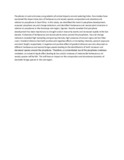Piospheric influence on forage species composition and abundance in semi-arid Karamoja sub-region, Uganda

View/
Date
2015Author
Egeru, Anthony
Wasonga, Oliver
MacOpiyo, Laban
Mburu, John
Tabuti, John RS
Mwanjalolo, Gilbert-Jackson M
Language
enMetadata
Show full item recordAbstract
Piospheres in semi-arid areas are gradients of animal impacts around watering holes. Few studies have examined the impact dynamics of herbaceous and woody species composition and abundance in relation to piospheres in East Africa. In this study, we identified the trend in piosphere development, assessed piosphere use and change indicators, and identified herbaceous and woody plant structure in relation to piospheres in the Karamoja sub-region, Uganda. Results revealed that piosphere development has been reactionary to drought and/or insecurity events and increased rapidly in the last decade. A diversity of herbaceous and woody plants exists around the piospheres. Use and change indicators revealed high trampling and grazing intensity, high presence of erosion signs and low litter cover. Gradient distance had both positive and negative effects on trampling intensity, percent exposure and plant height, respectively. A negative and positive effect of gradient distance was also observed on different herbaceous and woody forage species leading to the identification of both increaser and decreaser species around the piospheres. Therefore, as concentrated use of the piospheres continues unabated, an outward ripple effect leading to loss and/or increase of undesirable herbaceous and woody species will be felt. This will have an impact on the composition and abundance dynamics of desirable forage species in the sub-region.
Citation
Pastoralism December 2015, 5:12Publisher
University of Nairobi
